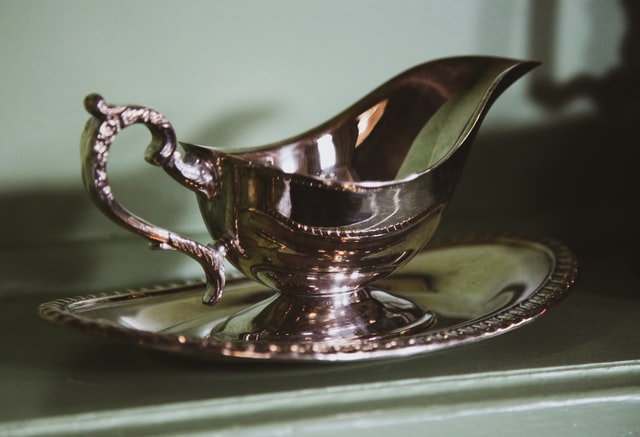Common Uses For Baking Soda You Must Know
Haven’t tried using baking soda to clean your teeth or your pans? Well, as they say, there’s always a first time for everything, such as knowing about some of the common uses for baking soda.
Author:Stefano MclaughlinReviewer:Karan EmeryMar 19, 202253K Shares737.2K Views

More than just a baking ingredient, other common uses for baking sodawill make you put it on your teeth, in your bathroom tiles, or in your clothes.
Known to chemists as the chemical compound sodium bicarbonate (molecular formula: NaHCO3), most regular people simply call it baking soda.
Baking soda is basically a leavening agent – something that makes doughs or breads rise – but it can also be a cleaning agent!
Amazing, huh?
By the way, before you proceed further, since baking has been mentioned, baking soda is different from baking powder. Still, both are used in baking.
Baking soda needs to be combined with something acidic (e.g., buttermilk or lemon juice) to make bread rise. With baking powder, it can make bread rise on its own. One reason is that baking powder contains some baking soda.
That’s why Healthline describes baking powder as a “complete leavening agent.”
Read further to know the common uses for baking soda aside from the usual baking stuff.

Cleaning headlights with baking soda - life hack test
What Is Baking Soda Used For?
You already have been given hints on some of the common uses for baking soda.
(1) To relieve itching and insect bite sting
Add some water on baking soda to form a paste. Then apply the paste on the area of the skin where you got bitten. Doing so can lessen the itchiness and relieve the sting.
(2) To clean things and remove stains
Dissolve some baking soda on water and use the solution to clean pots, kettles, and pans.
Also, one of the common uses for baking soda is to remove bathroom stains on the wall and floor (particularly if they’re tiled), coffee stains, and stains that accumulated inside a microwave oven.
For better results, you may mix baking soda with apple cider vinegar. Leave the solution for 5-15 minutes (depending on the amount of stain build up) before wiping or scrubbing the stain off with a sponge.
For cleaner clothes, baking soda can work like bleach. Add one-third cup of it when you launder clothes.
(3) To remove odor
One of the common uses for baking soda is to act as a deodorizer.
Baking soda can make clothes smell better and can remove foul smell from a refrigerator (place an open container filled with baking soda inside).
Leave a sponge on water with dissolved baking soda overnight to make it clean and smell fresh.
(4) To remove crayon marks
Yes! You’ve read that right!
For moms who have children fond of drawing on the wall using crayons, here’s one of the common uses for baking soda.
Simply add enough water on baking soda to make a paste. Then use a brush (an old toothbrush will do) to remove the crayon marks.
(5) To support oral hygiene
Baking soda, according to health website WebMD, can keep our teeth, gums, and mouth healthy.
One of the common uses for baking soda is to help prevent tooth decay. So, try using a toothpaste that contains baking soda.
For fresh breath, gargle water with a half-teaspoon of baking soda.
WebMD also said that baking soda is used for indigestion, kidney disease, and in some cases of cancer treatment (chemotherapy).
What Should You Not Use Baking Soda For?
Though one of the common uses for baking soda is as a cleaning agent, people should be reminded not to use it to clean everything.
Several online sources including Reader’s Digest mentioned that baking soda should not be used to clean the following:
(1) aluminum cookware
(2) antique silver
(3) ceramic stove top
(4) glass
(5) gold-plated utensils and dinnerware
(6) marble
(7) wooden furniture
Moreover, WebMD warns people to avoid using shampoo that contains baking soda. Prolonged use can cause hair breakage or lead to tangled or frizzled hair.
Conclusion
The things mentioned by WebMD are already beyond the known common uses for baking soda, telling people how useful it can be.
Imagine, doctors have been using baking soda for chemotherapy?
The important thing here is to know the common uses for baking soda as well as to avoid using it where it shouldn’t be.

Stefano Mclaughlin
Author
Stefano Mclaughlin is a Psychologist focused on mental health, emotional well-being, and healthcare policy. He studied Psychology and Public Health at the University of Massachusetts Amherst, gaining a deep understanding of the intersection between mental health and public policy.
Stefano's mission is clear: he aims to destigmatize mental health discussions, improve access to mental healthcare, and promote emotional well-being for all. Drawing from personal experiences with anxiety and depression, Stefano shares real stories to make mental health topics more relatable and less intimidating.
In addition to his advocacy work, Stefano enjoys delving into books, experimenting in the kitchen, and embarking on new adventures. These hobbies fuel his creativity and inspire fresh perspectives for his advocacy work.

Karan Emery
Reviewer
Karan Emery, an accomplished researcher and leader in health sciences, biotechnology, and pharmaceuticals, brings over two decades of experience to the table. Holding a Ph.D. in Pharmaceutical Sciences from Stanford University, Karan's credentials underscore her authority in the field.
With a track record of groundbreaking research and numerous peer-reviewed publications in prestigious journals, Karan's expertise is widely recognized in the scientific community.
Her writing style is characterized by its clarity and meticulous attention to detail, making complex scientific concepts accessible to a broad audience. Apart from her professional endeavors, Karan enjoys cooking, learning about different cultures and languages, watching documentaries, and visiting historical landmarks.
Committed to advancing knowledge and improving health outcomes, Karan Emery continues to make significant contributions to the fields of health, biotechnology, and pharmaceuticals.
Latest Articles
Popular Articles


